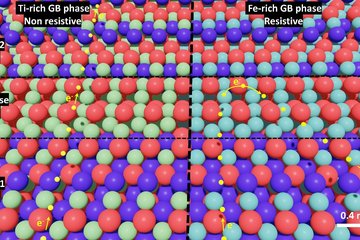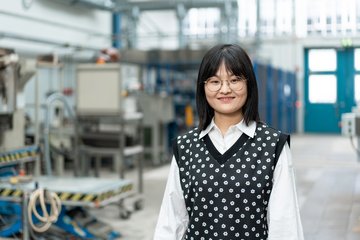From synthesis to application: enhancing a material’s sustainability throughout its lifecycle
Dr. Xuyang Zhou heads the new research group "Atomic Scale Dynamics of Sustainable Materials"
Reaching net-zero carbon emissions by 2050 increases the need for technological innovations in all sectors of industry and society. Structural and functional materials play a crucial role in these innovations. However, their production is both CO2-intensive and limited in lifespan due to harsh environmental conditions. Dr. Xuyang Zhou's new research group, "Atomic Scale Dynamics of Sustainable Materials," is dedicated to exploring the complete lifecycle of sustainable materials using cutting-edge, in-situ methods.

"I'm thrilled to lead a team that integrates various aspects of sustainable materials science", says Zhou. "Our unique contribution lies in our ability to observe the synthesis and application of sustainable materials in real-time through in-situ transmission electron microscopy. Rather than studying materials before and after chemical reactions, our approach allows us to capture atomic-scale insights at every stage of processing and application. It's a challenging yet promising endeavor."
Transmission electron microscopes utilize electron beams transmitted through a sample to create images at the atomic level. Combined with gas flow holders and other instruments, they enable real-time observations of chemical reactions in solid, gas, and liquid samples. During the processing, the team can observe the iron ore reduction process with hydrogen or ammonia, including the influence of different reduction agents and their chemical reactions and phase transformations within reactive gas atmospheres at the atomic scale. This method also aids in enhancing material durability under working conditions. Iron, aluminum, and nickel alloys are subjected to real-world conditions while being observed under the microscope, allowing direct visualization the effects of heat, force, corrosion, or hydrogen-rich atmospheres. This approach provides more accurate simulations of material failure than simply analyzing failures after they happened. Once these mechanisms are understood, material properties can be optimized accordingly.
The dynamic observations, coupled with theoretical interpretations from collaborating groups, shed light on underlying mechanisms and optimization opportunities for refining sustainable materials development. Given the interdisciplinary nature of the group, extensive collaboration with internal and external partners is key.
Zhou, who graduated in Materials Science from the University of Alabama, USA, joined the institute in 2019 with a fellowship from the Max Planck Society. He further specialized in transmission electron microscopy through a Humboldt fellowship. Prior to leading this project group, Zhou worked as deputy group leader of the "Atom Probe Tomography" group at the Max Planck Institute for Sustainable Materials (MPI SusMat).












